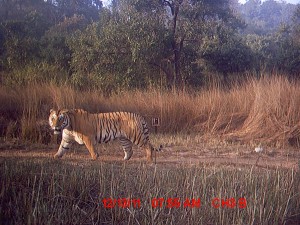Meeting of the State Board for Wildlife, Uttarakhand, 16th September 2013
The  State Board for Wildlife, Uttarakhand met on 16th September 2013. Some of the discussions and decisions are summarised below:
State Board for Wildlife, Uttarakhand met on 16th September 2013. Some of the discussions and decisions are summarised below:
Finalisation of the minutes of the SBWL meetings will be done after comments are taken in from the members
Agenda items will be circulated well in advance (atleast ten days before) before the date of the meeting, along with all relevant details, maps etc., so at to facilitae informed decision-making.
Eco-Sensitive Zones: those finalised (after incorporating the suggestions of the core committee appointed for the purpose) must be sent on an urgent basis to the MoEF . It was also decided that the prohibited, regulated, and permitted activities of each ESZ would be carefully decided and articulated as will be the Zonal Master Plan. The Bandipur National Park was cited as a good reference.
Setting up of a Tiger Conservation Foundation for the Rajaji tiger Reserve. It was informed that the Rajaji Tiger Reserve will be notified within a month.
Protection of wildlife in the higher altitude areas. It was informed that the state had made a conservation plan for snow leopards. This decision was applauded, however, members requested that they be allowed to offer suggestions on the plan.
Inclusion of two members from the State Wildlife Board, and the Wildlife Institute of India in the Disaster Management Advisory Committee to take care of ecological concerns.
Only ground plus one (the first floor will be allowed only to be of a particular height) buildings to be allowed in the vicinity of Corbett tiger Reserve. The height permissible as well as the definition of the area where such a regulation will be stipulated) will be done in consultation with some members of the board.
Fast tracking of voluntary relocation of:
Gujjars from Kalagarh tiger reserve
Chaukham village
Paand and Tediya village (Medavan range, Corbett Tiger Reserve).
Sundarkhal on the Kosi river corridor. A committee will be formed on the same. Non-official members will include WTI, Corbett Foundation and Sanskara
The funds for the relocation will be sourced from the state CAMPA funds, NTCA.
It was decided to fast track and establish the STPF for Corbett on an immediate basis.
To provide for an insurance scheme for forest frontline staff, and also ahar bhata for frontline staff posted in remote locations, in recognition of the extreme hardship faced by frontline staff working in very remote forests. The first exercise will be to identify remote field stations in each circle, and then bring them under this scheme. Similarly, provision of basic facilities for frontline staff such as provision of drinking water, toilets, communication facilities.
To expedite Immunity to Forest Officials and staff for use of Service Weapons while protecting valuable forest resources and wildlife, and authorise use of official firearms in the course of discharge of duty by Forest Department under relevant provisions of the law (Sec. 197 of the Cr. P.C.).
To initiate the process of establishing the Kilbury-Vinayak- Kunjakharak Himlayan Bird Conservation Reserve. This region is very rich in flora, due largely to the combination of landforms and soil types, apart from the moist character of the region. It is particularly well known for its avifuna, particularly pheasants such as the endangered Cheer Pheasent, Khaleej, Koklass.. Amongst the mammals found here is the fox, leopard, Himalayan black bear, serow—and the tiger. It is envisaged that 5,000 hectares of reserve forest area may be declared as Himalayan Birds Conservation Reserve.
A strategy for the Management and Conservation of key Wildlife Corridors.
The issue of human leopard conflict was discussed. It was brought out that conflict was very severe, caused untold suffering to people, and has resulted in the brutal killing of many leopards-a Schedule I species. Even so, there was no strategy in place. It was decided that a sub-committee will be formed for examining, mitigating and addressing this issue. Also, it was also recommended that the state will explore the methodology taken up to mitigate human-leopard conflict in Junnar region in Maharashtra which has shown positive results. Concerned experts will be invited.
A media workshop on human-wildlife conflict will also be organised. (SBWL member Prerna Bindra also offered to help with the same).
To move forward and finalise the State wildlife Action plan. A meeting of the core committee will be called on this
(A camera trapped tiger from Chilla Range, Rajaji National Park, Pix courtesy: WII)
very nice data….hope village relocation n new conserve reserve is formed